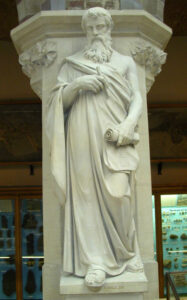

What is liberal arts math? Liberal arts math typically includes standard undergraduate requirements in algebra and statistics. It also includes the mathematical concepts you will study in disciplines such as logic, geometry, and the various science courses you will take as part of a liberal arts major.
Liberal arts degree programs today can sometimes catch some flak for not putting a strong emphasis on the modern STEM disciplines that drive business and industry today. But as it turns out, those criticisms are completely unwarranted.
As a matter of fact, mathematics and geometry are counted among the original seven essential subjects of a liberal arts education, and another one, astronomy, is certainly one that would be considered math-adjacent, at the very least.
There’s no modern or traditional course of study in the liberal arts that doesn’t require you to complete some math studies. But exactly what is liberal arts math?
What is Mathematics For Liberal Arts Supposed To Teach?
Mathematics for liberal arts students tends to take the same approach as liberal studies in general: it takes a broad, interdisciplinary perspective on the field.
That means an overview in topics such as:
- Algebra
- Mathematical structures
- Geometry
- Logic, probability, and statistics
- Problem-solving in math
- Consumer and everyday application of math
There’s no one correct course of study in any liberal arts program. While math will always be a part of that curriculum, different colleges often take different paths to teach you the kind of math you need to know.
Each college that offers a liberal arts major has its own way of making sure that graduates have the right level of skill and knowledge for a well-rounded education.
Many strong liberal arts colleges specifically design liberal arts math courses to align with other core studies in the arts and sciences. That can mean building in practical, elementary mathematical knowledge with applications in other liberal arts subjects, including:
Political science – Understanding statistics, polling averages, sampling bias, and weighted voting systems requires an ability to perform basic arithmetic and engage in quantitative reasoning.
Economics – Statistics are also important in economics and business, but so are basic math principals like exponential growth in investing and the network effect.
Art – The Golden Mean is an important concept in artworks, but it’s one that has been rooted in advanced mathematics since the time of Pythagoras and Euclid. It’s still used today in everything from music to book design.
Philosophy – Philosophy isn’t usually associated with math, but the branch known as metaphysics relies heavily on advanced math concepts that are at the cutting edge of physics and our understanding of the physical universe.
Like all the other diverse classes you take as part of a liberal arts curriculum, you can see that liberal arts math has applications outside the realm of numbers and measurement. You take mathematics as part of a liberal arts curriculum in order to apply those concepts in other disciplines, bringing even more depth and richness to those topics.
Mathematics For Liberal Arts Doesn’t Have Limitations, So Don’t Limit Yourself to Meeting Minimum Graduation Requirements

The answer to the question, what is liberal arts math?, comes down to identifying the kind of courses that are required as a minimum for earning a liberal arts degree. But it’s a mistake to think only about satisfying minimum graduation requirements. The truth is that as a liberal arts major, you can take advanced math classes too.
That just means you have to have a certain number of credit hours from a class that satisfies a particular category of math. That category may be called simply math, or mathematical and logical analysis, or quantitative reasoning, or even something else, depending on the school.
In the school’s course catalog, you’ll find a list of published courses that will satisfy that requirement. Almost always, you’ll find the graduation requirement saying something like “Math 204 or higher.
Most schools include their liberal arts math requirements as a part of a fixed set of general education requirements.
That simply means you don’t have to limit yourself to the most basic liberal arts math class. You can choose any kind of advanced math course to meet those requirements. So, if you’re anything like the liberal arts rockstar Euclid, and advanced trigonometry is more your speed, dive in and take those advanced courses!
Math courses are all part of the strong arts and sciences tradition that every liberal studies program is based on.





